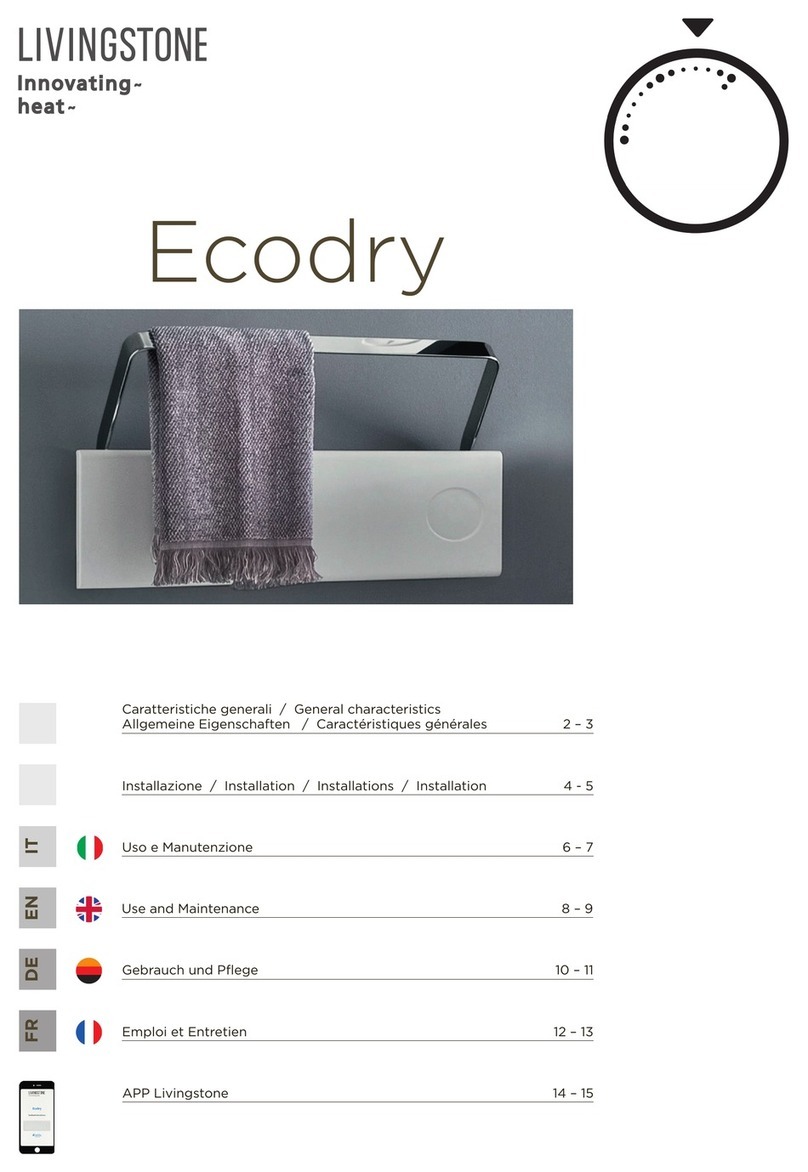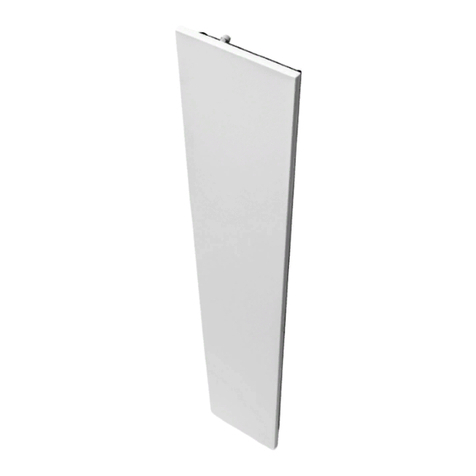
Dichiarazione di conformità
3
1Informazioni generali
Gentile Cliente: la ringraziamo per la preferenza da Lei espressa per i nostri prodotti.
Prima di installare e/o utilizzare il prodotto La invitiamo a leggere con attenzione questo
manuale di installazione, uso e manutenzione dell’apparecchio.
Le ricordiamo inoltre che il presente libretto deve accompagnare il radiatore nel caso di un suo trasferimento
ad altra destinazione di installazione
1.1 Informazioni sul prodotto
Grazie per la tua scelta!
Usando Livingstone ci stai aiutando a risparmiare energia, ad usare materiali riciclati, a rispettare l’ambiente.
Livingstone è una nuova tecnologia brevettata completamente eco-sostenibile. Il processo di produzione usa
polvere di marmo scarto di lavorazione dei marmisti. Nel processo è utilizzata meno energia rispetto ai
prodotti simili. Livingstone utilizza energia da fonti rinnovabili ed il prodotto è completamente riciclabile.
Questa è la filosofia degli inventori di Livingstone®:
La nostra missione è prenderci cura delle persone, dando calore all’ambiente in cui vivono con la fantasia e
creatività che contraddistingue i prodotti Made in Italy.
Il comfort e la qualità della vita sono il risultato della passione e della ricerca nella continua innovazione per
riutilizzare materiali riciclati in un nuovo processo tecnologico ove architettura, funzionalità, rispetto per
l’ambiente sono coniugati.
I prodotti sono eco-friendly e utilizzano parti di pietra derivanti dalla
lavorazione dei marmi, uniti grazie ad un processo alle basse temperature,
che consente un minore uso di energia nei processi e una minore emissione
di CO2 nell’ambiente.
Solo una filosofia sostenibile consentirà il futuro delle nostre generazioni.
Sono questi i valori in cui crediamo e realizziamo, ogni giorno, con i nostri
prodotti.
1.2 Informazioni relative alla sicurezza
Leggere la guida prima della installazione del prodotto.
Il pannello radiante è da utilizzare per il riscaldamento degli ambienti, ogni altro uso è proibito.
Il collegamento del pannello radiante deve essere effettuato da personale qualificato.
Evitare il contatto con prodotti chimici o alcol.
Verificare che i bambini non giochino con il dispositivo.
Il descrizione fornita è stata semplificata per una maggiore chiarezza, i dispositivi di protezione e gli
accessori di sicurezza e per il montaggio non sono stati rappresentati.
1: Polveri di marmo riciclate






























